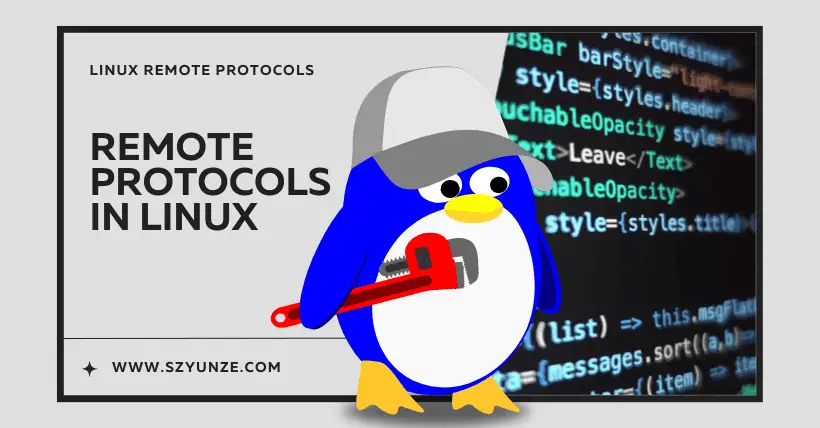Who in the Linux world hasn’t been burned by remote protocols? Today, let’s talk about Telnet, SSH, RDP, and RFB—these old-timers—and see which one will save you from losing more hair. If you like this, don’t forget to like, comment, and subscribe!
1. Telnet: The Grandmaster of Naked Connections
This thing is basically the convertible of the networking world—just enter an IP, and you’re in. Even a kid could use it. But since all data is transmitted in plain text, your coworker next to you can sniff your sudo password in seconds with a simple packet capture tool. Nowadays, only ancient devices still use it. Last time, I saw a factory PLC controller running Telnet—I yanked the network cable out on the spot.
2. SSH: The Encryption Overlord
The undisputed champion of port 22! With public-private key encryption, brute-force attacks don’t stand a chance, and you can even pull off sneaky tricks like port forwarding. Every sysadmin’s favorite—pair it with tmux, and you basically become an unkillable remote-terminal octopus. The downside? Barely any GUI support, and file transfers require scp or rsync as extra steps. Plus, some recent vulnerabilities leaked memory data, so update to OpenSSH 9.3 or later ASAP.
3. RDP: Microsoft’s Cozy Trap
The official remote desktop protocol for Windows, but ironically, it runs better on Linux than on its native OS! Dynamic resolution scaling? Check. Seamless 4K-to-mobile transitions? Check. GPU acceleration for CAD rendering? Check. But font rendering is a mess, and setting up xrdp on Ubuntu can drive you insane. The worst part? Leaving port 3389 open by default—it’s a hacker’s paradise for botnet farms.
4. RFB: The Cross-Platform Slacker
The protocol behind the VNC family, supporting everything from Raspberry Pi to MacBook. The pixel-based transmission might seem primitive, but it’s surprisingly stable over poor network conditions. Its touchscreen compatibility is top-tier, making an iPad a legit Linux terminal. The downside? Slow as a tractor—expect a two-second delay when coding. Encryption? Forget it, unless you manually configure TLS, which is somehow even harder than writing a shell script.
5. WebSocket: The Trendy Newcomer
Nowadays, people are running SSH in browsers—no client needed. Just slap an Nginx reverse proxy on it, and boom, instant web terminal. Clients love it. But be careful—XSS attacks can hijack your cookies. A recent exploit let attackers inject rm -rf commands via WebSocket. Yikes.
6. SFTP: File Transfers Done Right
Don’t confuse this with the dinosaur FTP! It uses an SSH tunnel for file transfers, and even firewalls step aside for it. You can mount it as a drive in your file explorer, making it ten times more reliable than sending files via WeChat or QQ. The catch? Large files (4GB+) tend to freeze—good luck transferring Blu-ray ISOs via WinSCP.
7. X11 Forwarding: GUI Over SSH
Supposedly lets you run remote GUI apps on your local machine. In reality? A slideshow. Running Firefox over X11 Forwarding will eat 50% of your bandwidth, and your mouse pointer will have ghost trails. The only real use case is demoing stuff for CLI newbies—keep a bottle of heart meds handy.
8. Mosh: The King of Reconnection
The ultimate evolution of SSH—lets you switch Wi-Fi or mobile networks without dropping your session. It even predicts your keystrokes, so you can keep typing even if the network dies. The downside? The server-side setup is a nightmare, the client doesn’t support Windows, and the mobile keyboard experience is atrocious. If you’re on Android, check out Termux—just don’t expect miracles.
9. SNI: The Stealthy Remote Access Trick
It hides your remote connection inside HTTPS traffic, so corporate firewalls won’t even notice. Pair it with a WSGI container, and you can roam the public internet freely. But mess up the SSL cert setup by one letter, and your whole system goes offline. Use with caution—if your IT admin catches you using this, expect a physical attack (read: power cord yank).
10. ZeroTier: The Ultimate VPN Alternative
It creates a virtual LAN, making remote access feel like a local connection. Connection success rate is leagues ahead of frp, and the free tier supports up to 100 devices. But DNS configuration is a headache—setting it up on Ubuntu or CentOS will make you question your life choices.
11. Final Thoughts
When choosing a protocol, remember these three golden rules:
- For security, SSH all the way.
- For cross-platform use, RFB/VNC is your friend.
- For performance, go RDP, no questions asked.
Don’t fall for the “why not both” trap—last time someone ran SSH tunneling + RDP + SFTP at the same time, their server OOM-crashed instantly.
And one last tip: if you’re editing /etc/ssh/sshd_config, always keep two terminals open—one misconfiguration, and you’re locked out of your own server.

Disclaimer:
- This channel does not make any representations or warranties regarding the availability, accuracy, timeliness, effectiveness, or completeness of any information posted. It hereby disclaims any liability or consequences arising from the use of the information.
- This channel is non-commercial and non-profit. The re-posted content does not signify endorsement of its views or responsibility for its authenticity. It does not intend to constitute any other guidance. This channel is not liable for any inaccuracies or errors in the re-posted or published information, directly or indirectly.
- Some data, materials, text, images, etc., used in this channel are sourced from the internet, and all reposts are duly credited to their sources. If you discover any work that infringes on your intellectual property rights or personal legal interests, please contact us, and we will promptly modify or remove it.



